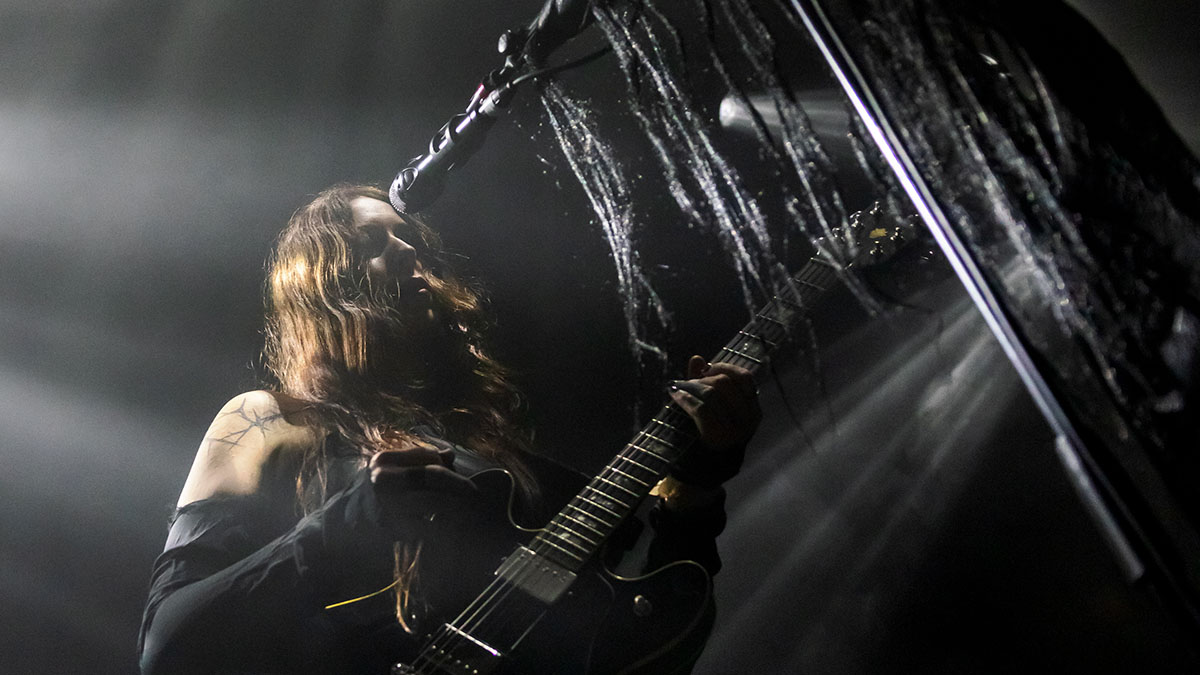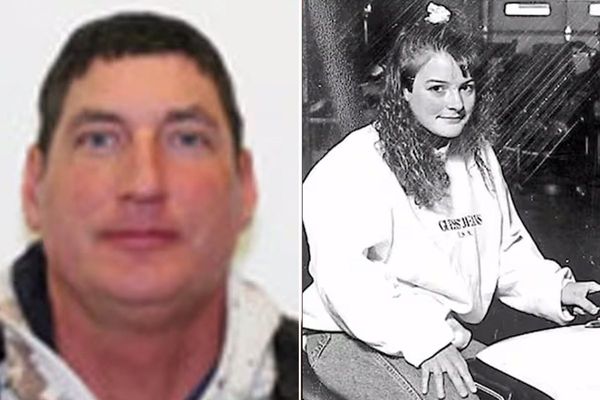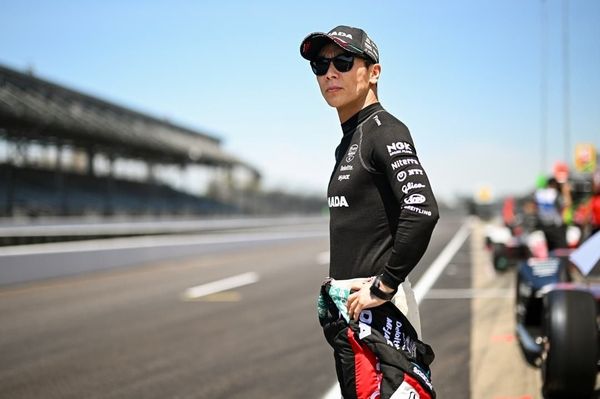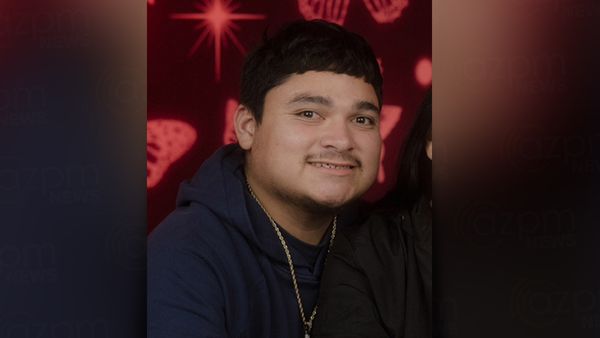
When multi-faceted iconoclast Chelsea Wolfe describes her new album, She Reaches Out to She Reaches Out to She, as a “musical rebirth,” she’s not just talking about a radical development in tone and timbre. She means everything from the creative process to the thematic content. And, as a strong, educated woman tapped into music, literature, film, philosophy and spirituality, she’s well aware that birth never comes without pain.
“Pain and struggle on a musical level is never a bad thing because it usually leads to some sort of tension that breaks into something unexpected that maybe no one involved had previously thought of,” she says. “For us, that resulted in a really unique record.”
She Reaches Out to She Reaches Out to She isn’t just a unique release. It seems more like a watershed moment from a musical artist whose creations have previously incorporated elements of doom metal, indie punk, blackened folk and electronic music.
If you picture PJ Harvey, Bjork, Portishead and Trent Reznor being fed nothing but Radiohead’s Kid A for a year, that offers a vague idea of how different She Reaches Out to She Reaches Out to She is from any of Chelsea Wolfe’s previous albums.
The record marks the first time Chelsea Wolfe have worked with TV on the Radio co-founder and producer Dave Sitek, who took a hands-on approach in the studio.
With Wolfe’s sometimes quite reluctant blessings, Sitek modernized and transformed the raw songs from ethereal demos to haunting soundscapes of deconstructed instrumentation, textural guitars, abundant keyboards, electronic beats and pulsing samples.
There are still remnants of the band’s echoey, layered fuzz and the occasional chuggy riffs in songs like Dusk and Whispers in the Echo Chamber, but many of Chelsea Wolfe’s recognizable guitar elements are downplayed and woven into a web of atmospheric rhythms, trip-hop beats and digital noise that complement and draw the focus to Wolfe’s mystical and heart-rending vocals.
“I feel like I changed so much as a person from the time that I originally conceptualized this album to the point when it actually came into shape in the studio with Dave,” Wolfe says.
“So I was really open to watching it change and become what it wanted to be. I kind of think of this album as its own being, which willed itself into existence over time through all sorts of experimentation and a willingness to embrace the unexpected.”
Wolfe started working on songs for the album way back in 2019, using mostly her 1977 Gibson ES-335 and writing note-by-note melodies that created a framework for her vocals. She and the band continued to work on the compositions remotely throughout the pandemic, and over time, she gradually tapped into other creative techniques that provided more atmosphere.
“In 2021, I did this full-on ritual where I set up a circle of pedals and I stayed inside of it and wrote a bunch of demos,” she says. “When I wrote The Liminal, I was using a lot of experimental pedals, like Death by Audio’s Echo Dream 2, and I had the Electro-Harmonix Mel 9 Tape Replay Machine, which turned the guitar into this chorus of voices.”
Along the way, Wolfe sought inspiration from various unconventional spiritual techniques, including intense meditation, reading moon cycle progressions, tarot cards readings and any number of sundry occult rituals.
“I’m not a Wiccan, but I do practice elements of witchcraft, which is essentially ritualizing the way you live and the way you approach things,” she says.
“It’s all very personal stuff to me, and it’s not about predicting the future or anything. But if I get stuck on a song, I’ll ask the tarot cards for guidance or to help me figure out what the song wants to be about.”
While she was integrally involved in assembling guitar parts for the new album demos, Wolfe put away her guitar when the band entered the studio and handed all six-string duties to lead guitarist Bryan Tulao, who joined in 2017, four albums into Chelsea Wolfe’s career – she released her first record, The Grime and the Glow, in 2010.
Separated from his bandmates by the Covid lockdown, Tulao recorded his guitar parts and sent the files to his bandmates. That’s when the breakdown in communication began.
“They would send me a really minimal guitar part without vocals or a drum beat, and I would build some ideas around it,” Tulao says. “Each time I sent something back, I’d say, ‘Well, I don’t know if this is what we want. It’s just an idea, but there are a million other ways we could go with this.’ And I wouldn’t hear anything from them for a while. That happened with everything.”
Some of the files Tulao worked from included loose drum beats as a guide, but nothing gave him a clear vision for the album. So he kept adding parts and emailing them over. He waited for feedback from Wolfe but… nothing. The more he wrote, the less confident he became.
“I thought, ‘Man, they hated it.’ But it’s okay. I’ll do something else.” Then, about three weeks after I’d sent them something they’d say, ‘Oh hey, that was great.’ And I’d go, ‘Well, since then I did some other stuff. Can I send you that? And they’d go, ‘No, it’s really good.’ And then they’d give me something else to work on. And it was the same thing – something really minimalistic that I could do 100 things with. There were definitely some big wall-of-sound guitar sections I put in there that just disappeared.”
While Tulao was wrangling with what type of mood to put on spare compositions that lacked direction, the other members of Chelsea Wolfe – Wolfe, multi-instrumentalist and co-founder Ben Chisholm, drummer Jess Gowrie – were debating about how much they wanted to alter the compositions, which Sitek felt should be radically revamped and heavily saturated with keyboards. At first, not everyone agreed. Worse, Tulao was left mostly in the dark.
“There was a bit of a contrast between Dave Sitek’s desire to go for a very minimalistic take on the songs, and then our usual inclination as a band to build layer upon layer,” Wolfe says.
“The compromise came in creating these pockets of void-like space where there would just be a synth or two going on with some pattern from the guitars and then contrasting that with these swirling, visceral portals of sound.”
Wolfe worked with Chisholm to cut and paste guitar and drum parts to make the songs more unsettling. Then Sitek took the process further by running Tulao’s passages through a modular synth wall – which rendered them almost unrecognizable – or replacing them completely with new keyboard passages.
What began as these guitar songs got transformed into this other stuff, but it was still rooted in guitar. It was a totally new way to work
Chelsea Wolfe
“We used The Pulsar 23 drum machine and Lyra-8 [organismic synth] a lot. Also, we used this old Behringer Arp 2600 synth to replay something that started as a guitar line,” Wolfe says.
“So what began as these guitar songs got transformed into this other stuff, but it was still rooted in guitar. It was a totally new way to work, so there was some clashing. But then, we all saw that these ups and downs in dynamic range and the mix of minimalism and chaos started to make sense and work together in a way that reflected how we were all feeling.”
Since he was the musician most dramatically affected by the transformation, Tulao went through something of an emotional pinball machine.
He tried to contribute to the new methodology by using a wide range of pedals, including the EarthQuaker Devices Palisades overdrive, the Death by Audio Apocalypse fuzz and a Chicago Iron Tycobrahe Octavia octaver. He wasn’t offbase. Everything fit into Sitek’s open-concept blueprint, just not as Tulao had originally intended them.
I think all the weird guitar parts sound really amazing, even if you can’t tell they’re guitars
Bryan Tulao
“Initially, it was a bit surprising to hear what they did with my parts,” Tulao says. “During the last couple of days of recording, Dave was doing a rough mix, and I could hear that my guitars weren’t there. I said, ‘Are my guitars going to get added back in there for the final mix?’ And he said, ‘I don’t think so.’ I was a bit taken aback. But I’ve come a long way since then, and now I think all the weird guitar parts sound really amazing, even if you can’t tell they’re guitars.”
Once She Reaches Out to She Reaches Out to She was recorded, Chelsea Wolfe had to figure out how they were going to play the new songs live. They didn’t want to use too many samples directly from the album, so they cherry-picked the sounds they wanted to trigger with drums and encouraged Tulao to fill in the remaining space with new guitar parts. So the guitarist revamped his pedalboard and revised his playing style.
“The first time we got together to rehearse, I came in with some synth pedals so I could emulate the synth parts on guitar. And Chelsea said, ‘You know, the guitars don’t have to sound like synth parts. They can totally sound like guitar,’” Tulao says. “I really liked that idea, and it broadened the spectrum much more for how creative I could be when I reimagined all of these parts for guitar.”
“I love that these things that started as guitar parts became synth parts for the album, and now they’re becoming different kinds of guitar parts for the live show,” Wolfe says.
“That’s an example of how this album is a reinvention and a rebirth. For me, these songs really demanded to be lived. I would write a song and then something would happen where I really had to live that song out. They weren’t going to let me get away without actually feeling them.
“I wrote Everything Turns Blue about leaving a toxic relationship because I had seen someone really close in my life leave a toxic relationship and she talked to me a lot about it. I wrote that about her experience, and then I experienced something very similar and had to leave a toxic relationship, which was hard for me, but it was really interesting that I had to go through that after I wrote the song.”

To create so many innovative brand new arrangements for the songs live, Tulao has been diving down a rabbit hole of ambience and experimentation. He has pulled out old boxes of Boss and MXR pedals and stacked them with newer boutique effects to generate ambient swells and unconventional tones.
“I like to loop parts and build on them in different ways, using harmonies or unusual tonal stuff,” he says. “I probably drive my neighbors nuts because there are times I’ll spend an hour hitting a C chord over and over and adding reverb and delay to see if I can find exactly the right tone.”
On tour, Wolfe will strap on a guitar for the older songs. She’s bringing her trusted 335, a hollow-body Gretsch and a Taylor acoustic. Tulao also plans to travel with his three favorite guitars – a Fender Troy Van Leeuwen Jazzmaster, a Fender Mustang with P-90s and a Dunable Yeti.
“I don’t want to be excessive, but I don’t want to keep having to tune between songs,” he says. “And there are a few different tunings on this album.
Those tunings include D standard and drop C, and Tulao likes to mix them with more unconventional tunings.
“A lot of them are tunings in my head,” he says. “I don’t know if anyone else plays them, but I like the way they sound. I mess around with the strings until I find a weird sound I like. Sometimes it’s as simple as having a string tuned just a little bit off, and when you play a chord it doesn’t quite sound right. It gives the songs a fuller, more unusual feel and sometimes I play octaves, so they ring out a little more prominently.”
I love writing in the studio. Working in that zone and being all up in my head comes more naturally to me than being onstage
Having just experienced an emotional rebirth with She Reaches Out to She Reaches Out to She, Wolfe is excited to push the band’s sonic boundaries even further in the future. She has already mapped out ideas for Chelsea Wolfe’s next album and plans to fully dive into them after the band finishes touring. She is also finalizing plans for a collaboration with one of her favorite indie bands but can’t yet reveal who.
Wolfe has always enjoyed working on other projects. In 2021, before the most arduous sessions with Sitek, she collaborated with hardcore band Converge on the record Bloodmoon. She also teamed up with Tyler Bates for a song for the soundtrack to the horror film X, and she continues to work with multi-instrumentalist Jess Gowrie on the project Mrs. Piss, which released Self-Surgery in 2020.
“I love writing in the studio,” Wolfe says. “Working in that zone and being all up in my head comes more naturally to me than being onstage. And I love the challenge of sharing ideas with other people and doing different kinds of stuff with them. I think that’s part of the way that I can continue to grow as a musician.”
- She Reaches Out to She Reaches Out to She is out now via Concord.







